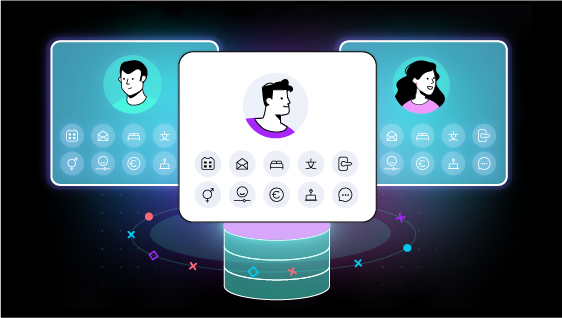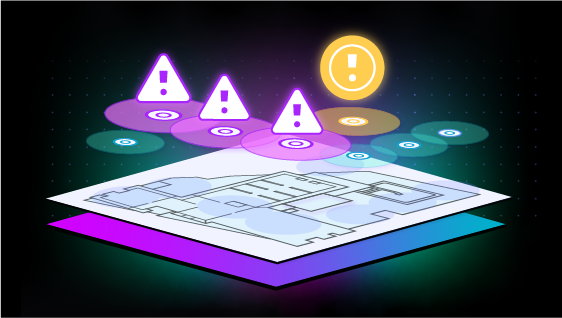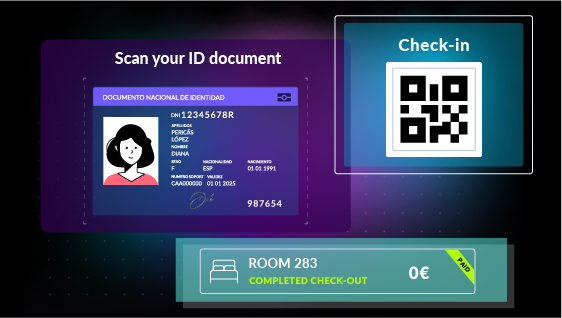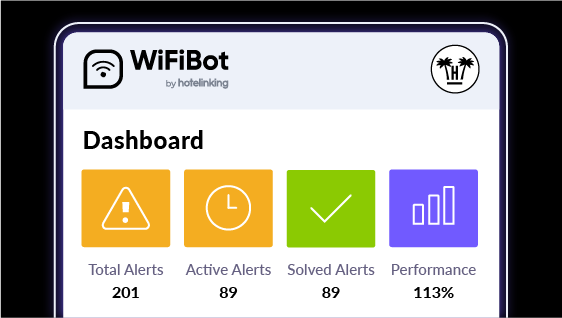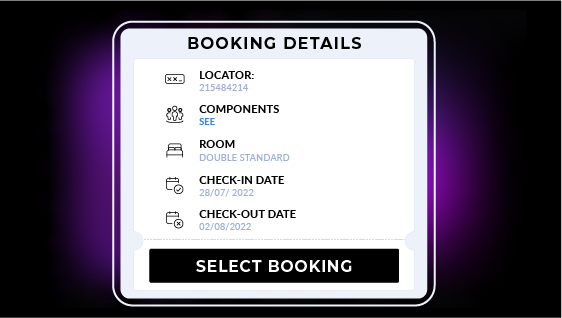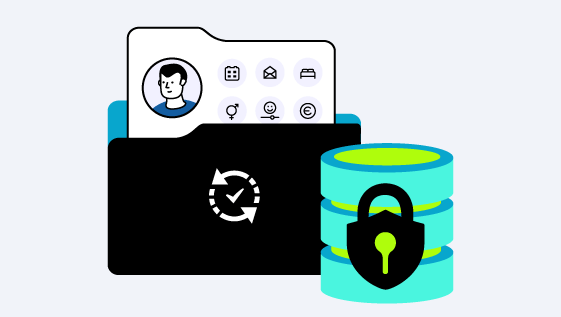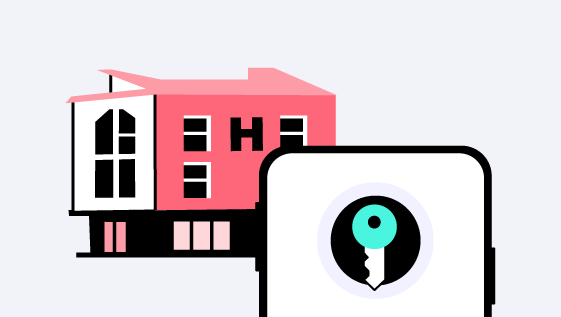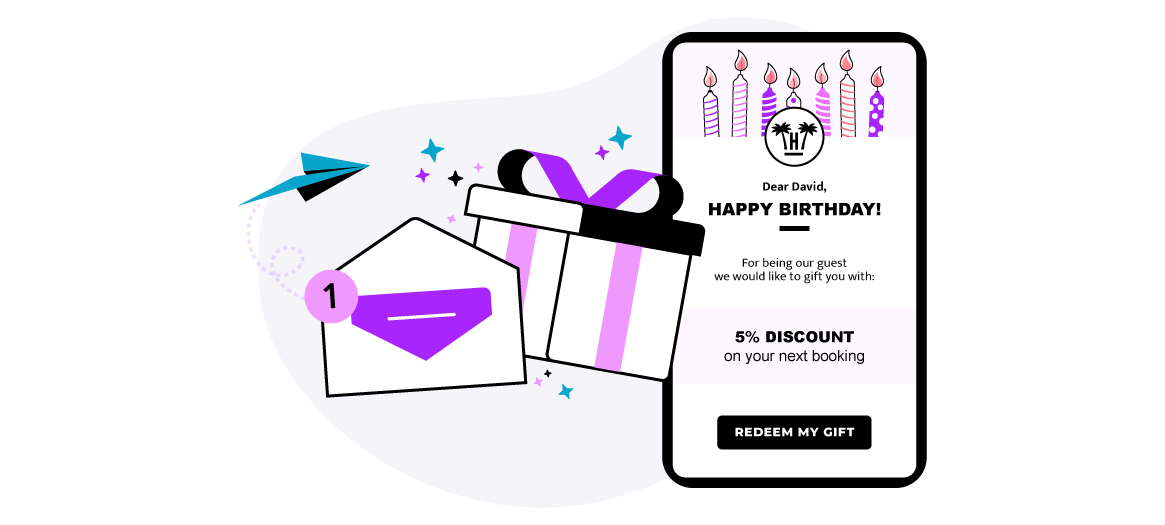
How to create a 100 % digital loyalty programme from scratch
Any hotel can create a system that fosters loyalty and rewards guests..
Loyalty is all about connecting with customers in a way that builds a mutually beneficial relationship. It is both a way of rewarding customers for their loyalty and a growth opportunity for the property.
Loyalty programmes have been part of hotel strategies for a long time because their results are overwhelming and prove their effectiveness. For example, a study by GesHotels reveals that exceeding a guest’s expectations and fostering guest loyalty makes the company’s results more profitable, achieving greater contracting without intermediaries and reducing dependence on OTAs by 17.4 %.
In such a competitive industry, hotel companies are looking for new ways to add value to their customers’ experiences, and great strides are being made in this regard. For example, many experts suggest that, with the emergence of the metaverse and blockchain, NFTs will revive loyalty programmes. In fact, although we are still in a nascent stage, in the tourism industry we already find some applications in hotels, with their own art collections in aviation, with collections for business customers; and in destinations, with their own virtual cities.
However, whatever form it takes, the key to a loyalty programme is the value it brings to the customer. Consumers are reluctant to join loyalty programmes because they feel that what they offer is not worth the time, money or effort to sign up. Traditional points or discount cards are falling into disuse as travellers now prioritise personalisation or gamification, among other advantages, rather than rigid benefits.
Any hotel can create a system that fosters loyalty and rewards guests. Still, today too many small hotels dismiss loyalty programmes as they consider them as an option valid only for large hotel chains. Simple programmes can be created without a large investment and with tangible results from implementation. You just need to know where to start.
Benefits of implementing a loyalty programme in a hotel
In a context where hoteliers are competing with large OTAs to attract customers, loyalty programmes are becoming a strategic tool. Encouraging repeat business and rewarding loyal guests is a practice that allows a business to grow and increase its profitability. In this sense, loyalty helps to:
- Increase revenue: it is proven that loyal customers spend more than one-off ones. Moreover, because they know and trust the brand, they are more likely to spend and their purchase frequency increases.
- Save costs: although initially implementing a loyalty programme may involve some investment, in the long run it pays off because the cost of retaining a customer is lower than the cost of attracting a new one.
- Improve brand reputation: a loyal and satisfied customer is the best advertisement for the company. Their opinions help to improve the property’s reputation and are one of the most influential factors in the decision-making process.
- Improve the relationship with the customer: a loyalty programme that satisfies and impresses consumers will also make them feel more valued and connected to the brand. It also opens a direct communication channel with the customer that allows you to send direct messages in which you can present personalised offers.
- Increase direct sales: according to the aforementioned study, repeat guests increase bookings on direct channels on their next visits, in other words, through your website’s booking engine, which means savings in commissions to third parties. Over time, the dependence on OTAs can be reduced by up to 17.4 %.
- Attract new customers: if a new customer sees that being part of the loyalty programme will give them access to better prices and benefits, they will most likely sign up.
How to create a hotel loyalty programme
In order to implement a loyalty programme, the following steps must be taken:
1. Setting a target
The benefits of customer loyalty are unquestionable, but at this stage it is a matter of being more specific about the purpose of the actions, taking into account the property’s needs. For example, you need to rethink whether you need to strengthen the relationship with existing customers, increase the amount they spend during their stay, increase the number of repeat guests, capture the attention of those who are not yet customers, get more direct bookings and then get them to come back, etc.
2. Knowing the target audience
Another fundamental step is to research on the guests, in other words, to collect valuable information to understand their preferences to customise the programme accordingly.
The information to be collected should be about their booking habits (how, when and where they book), the type of bookings (length of stay, destinations, accommodation, other expenses) and their profile (nationality, people they are travelling with, etc.).
This not only allows us to gain an in-depth understanding of customers and their motivations, but also to create segmentations to identify the most profitable and loyal profiles and hence tailor rewards according to their behaviour.
3. Defining the benefits and advantages
The reasons why guests do not join such programmes are either because they are not interested in what is on offer (lack of customisation), because they are unaware of the benefits (lack of communication) or because it is too difficult to achieve the benefits (lack of purpose). For this reason, it is necessary to carry out research to identify customers’ real needs and define the programme’s goals.
In general, the benefits of a loyalty programme that truly delivers value to the guest should be personalised, easy to understand, accessible, attainable, instant and with not too many restrictions.For example, rewards for each booking, free extra services, welcome gifts, upgrades, promotions such as discounts on bookings, etc.
4. Choosing the most appropriate technological tools
At this stage and after having defined the previous aspects, a key element to support the loyalty programme is technology: its use will not only help in the creation of the plan but also in the automation of processes and will improve the customer experience.
An essential system for customer loyalty is a Hotel CRM that enables on the one hand to store, manage and analyse the entire customer database from the same place, and on the other, to implement loyalty strategies, such as the automation of personalised communications. For example, the Astoria Playa Hotel in Alcúdia (Mallorca) sends automated emails to greet its customers on their birthdays using the CRM that we have developed together with our technological partner PUSHTech. The property simply sends them their best wishes, without any promotional codes or marketing messages, and they claim to have increased their repeat bookings thanks to this campaign. Frequent one-to-one communications like this help keep customers engaged and drive sales.
In addition, with CRM it is possible to know what the customer is like at all stages of the buying process. For example, you can find out whether a customer is only interested in beach hotels, which type of board they always choose, how many times they have asked for an upgrade or how often they come back to the same property.
This information is of great value when managing loyalty campaigns because it allows you to segment your contact list based on common features or actions and then optimise your actions. Thus, this system not only allows to record customer data and actions but also to launch campaigns and improve them, constantly monitoring the process.
Besides, having a customer data capture tool is essential to build a verified guest database with basic contact information (email, age, language, nationality, etc.) that allows us to build complete profiles and launch loyalty actions.
Systems such as a Captive WiFi Portal securely and quickly collect this customer data, while being capable of multiplying the possibilities of the loyalty programme and boosting the strategy. This captured data can be combined with the hotel’s PMS data to segment the database as much as possible and integrate them into the CRM.
To go one step further in loyalty, there are Captive WiFi Portal, such as Hotelinking’s, that give the option to reward repeat guests in a personalised way. That is, when the guest connects to the hotel’s WiFi, the system saves the MAC address of each device they connect with. This way, when they come back, the system recognises them without requesting their details again.
At this point it is possible to send them personalised communications rewarding them for their loyalty with a reward that the accommodation has previously configured. The type of reward can be redeemable at the property itself, or a promocode linked to the booking engine on the corporate website. The rewards structure can be very simple (same reward for each new stay), or become more specific as the number of stays increases. For example, the Gran Talaso Hotel Sanxenxo (Galicia) uses rewards that can be redeemed in the property (bottle of cava and chocolates) for the repeat guests that it detects.
It also offers the option to foster loyalty among new customers with the instant welcome bonuses. Upon arrival at the hotel, it is an excellent opportunity to start a direct relationship, just like the BG Hotel Pamplona which offers a welcome glass of cava. A detail that is not perceived as aggressive advertising and is very useful for building a relationship of trust.
